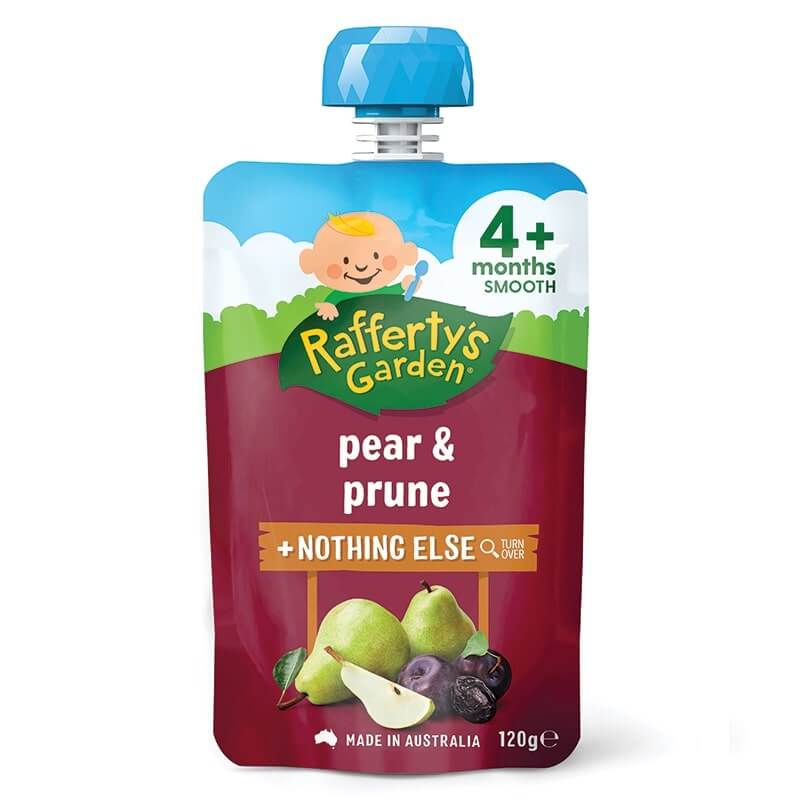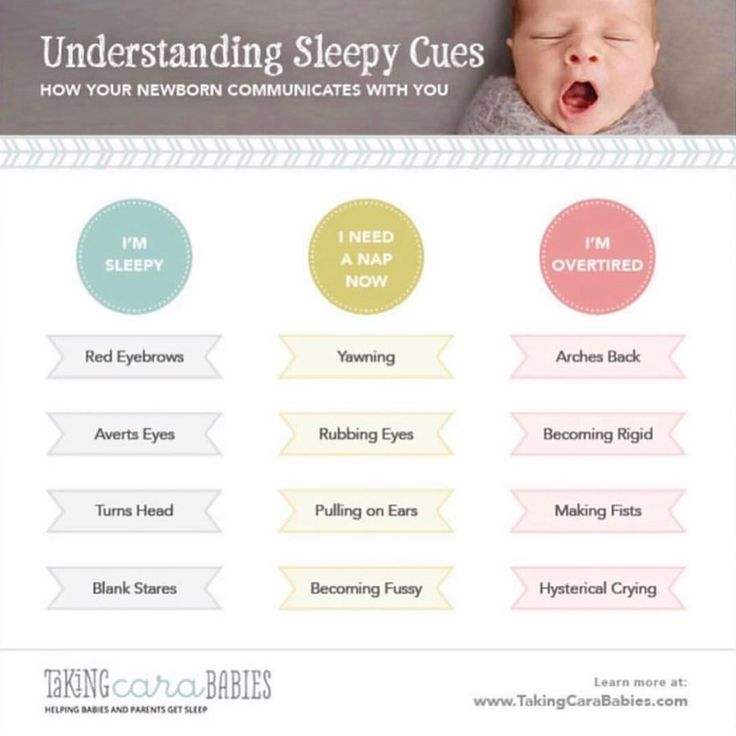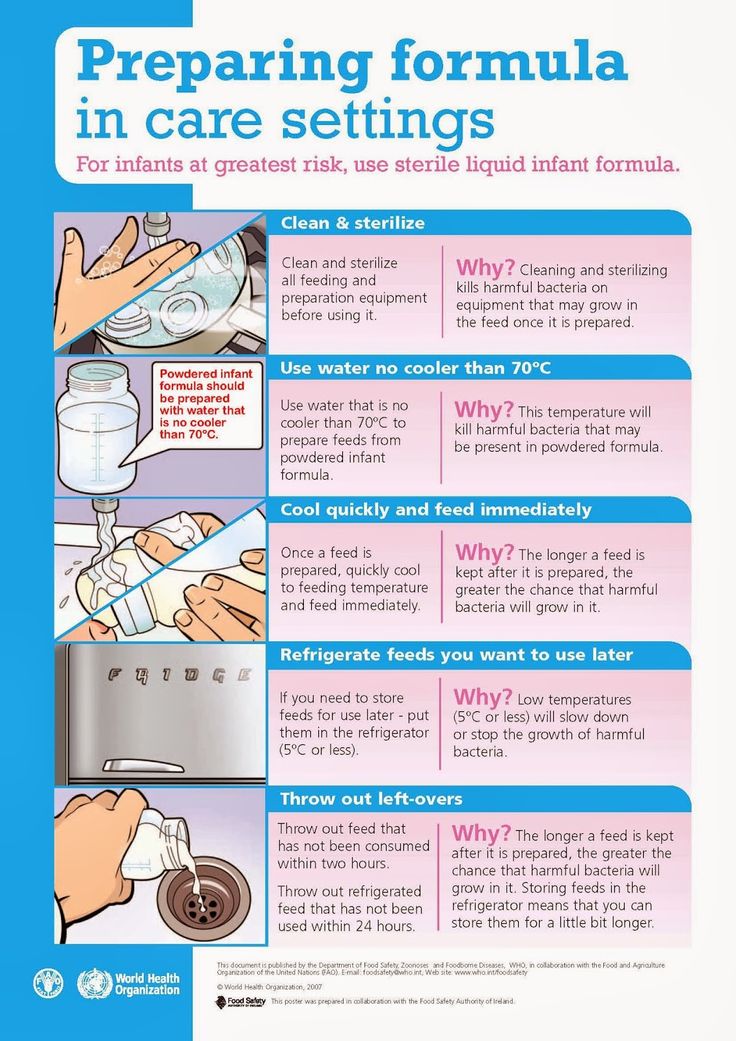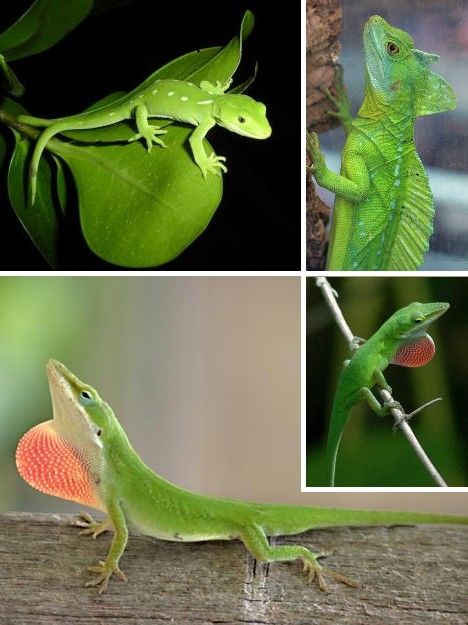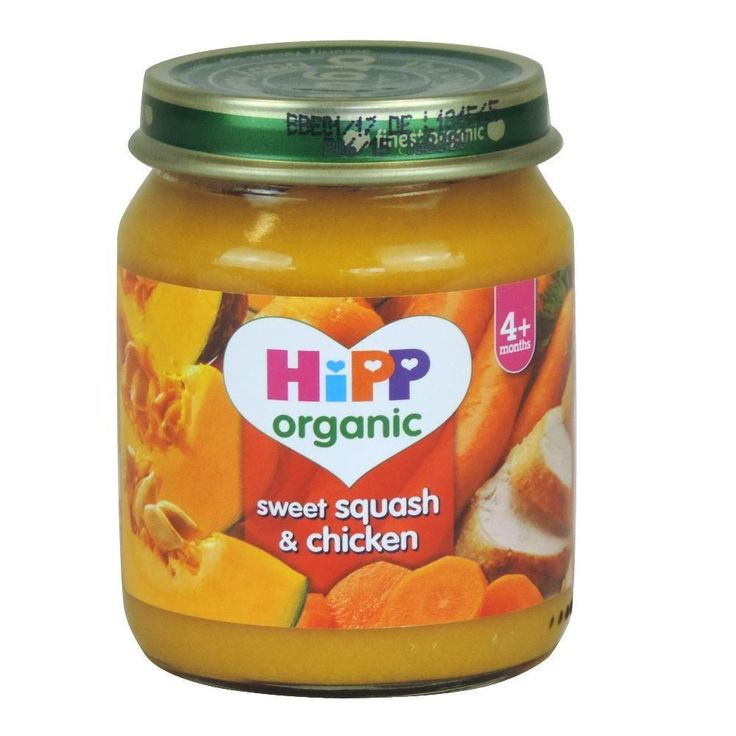Prunes for baby first food
Easy Prune Puree (Iron-Rich and So Easy)
byAmy Palanjian
Updated
Jump to RecipeThis post may contain affiliate links. If you shop from one of our links, we may earn a commission.
With one ingredients and a simple method, this easy Prune Puree is a yummy baby food that also boasts fiber and iron. Try it as a single ingredient baby food, stirred into oatmeal, or to help relieve baby constipation.
Prune Puree
If you think of prunes, you probably think of serving them for one reason. (Constipation!) And while they can be helpful for that, they’re also a nice way to turn a shelf stable fruit into homemade baby food by simply blending with water.
This baby food has fiber, iron, and a pleasantly sweet flavor that’s great on it’s own or mixed into a simple baby food combination.
TIP: Find more of my favorite No-Cook Baby Food Recipes here.
Ingredients in Prune Puree
To make this baby food, you just need a bag of basic pitted prunes. You can use regular or organic, depending on what you prefer and can find at your store. (You could use prunes with pits, just remove the pits before you start the process!)
How to Make Prune Puree Step-by-Step
Here’s a look at the basic process involved in making this recipe. Scroll down to the bottom of the post for the full information.
- Soak the prunes in water.
- Transfer the prunes to a blender using a slotted spoon.
- Blend, adding just enough water to make a smooth puree.
- Serve or store in the fridge or freezer.
TIP: You can serve this off of a spoon, spread onto toast baby led weaning style, or mix into plain yogurt or baby oatmeal.
Tips for Making the Best Prune Puree
- To store in the fridge: Add to small airtight containers and refrigerate for 3-5 days.
- To freeze: Add to a silicone ice cube tray and freeze overnight. Transfer frozen cubes to a zip top freezer bag and seal, removing as much air as possible.
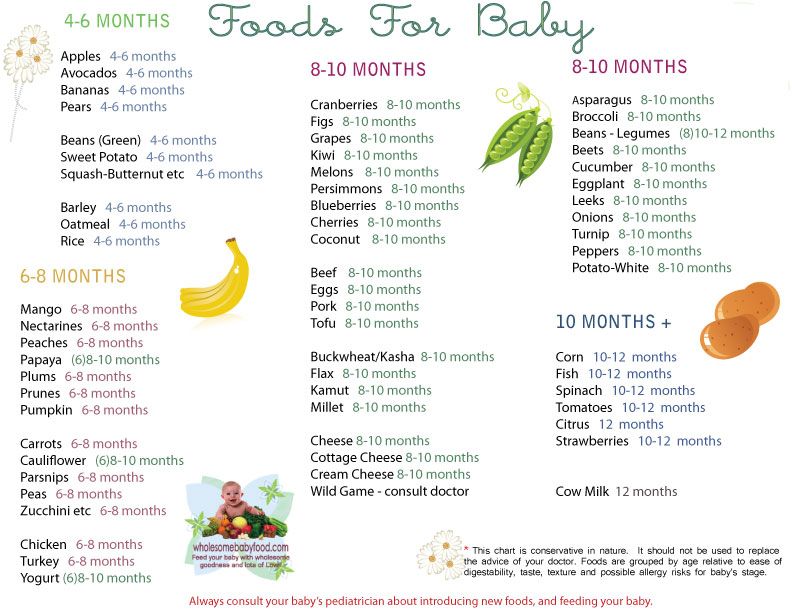 Freeze for up to 6 months.
Freeze for up to 6 months. - Serve alone or stir into baby oatmeal.
- Add to a simple smoothie to help with constipation.
- Spread onto a finger-size stick of toast to serve Baby Led Weaning style.
Prep Time 30 minutes
Cook Time 0 minutes
Total Time 30 minutes
Author Amy Palanjian
Cuisine American
Course Baby Food
Calories 91kcal
Servings 6
- ▢ 8 ounces pitted dried prunes
Add the prunes to a bowl and cover with water. Soak for 30 minutes.
Add prunes to a blender using a slotted spoon. Blend, adding 1/3-½ cup water to make a smooth puree—or as much as desired to reach the desired consistency. (Adding more water will make a smoother puree, less a thicker one.) Use the stick that came with your blender, or stop and start as needed to help the mixture move around in the blender.
Serve or store.
Vitamix Blender
Silicone Ice Cube Tray
Storage Containers
- To store in the fridge: Add to small airtight containers and refrigerate for 3-5 days.

- To freeze: Add to a silicone ice cube tray and freeze overnight. Transfer frozen cubes to a zip top freezer bag and seal, removing as much air as possible. Freeze for up to 6 months.
- Serve alone or stir into baby oatmeal.
- Add to a simple smoothie to help with constipation.
- Spread onto a finger-size stick of toast to serve Baby Led Weaning style.
Calories: 91kcal, Carbohydrates: 24g, Protein: 1g, Fat: 1g, Saturated Fat: 1g, Polyunsaturated Fat: 1g, Monounsaturated Fat: 1g, Sodium: 1mg, Potassium: 277mg, Fiber: 3g, Sugar: 14g, Vitamin A: 295IU, Vitamin C: 1mg, Calcium: 16mg, Iron: 1mg
Tried this recipe?Rate in the comments and tag @yummytoddlerfood on IG!
Related Posts
Related Products
Happy Family Meals (Meal Plans)
Buy Now
Happy Family Meals (Vol 2)
Buy Now
Yummy Toddler Snacks
Buy Now
Yummy Baby Food
Buy Now
Share it with the world
FacebookTweetPinFiled Under
Prune Puree Baby Food (Easy First Food)
By Anjali Shah on
This post may contain affiliate links. As an Amazon Associate, I earn from qualifying purchases. Please read my disclosure.
As an Amazon Associate, I earn from qualifying purchases. Please read my disclosure.
This simple recipe for homemade prune baby food puree will quickly become one of your baby’s favorites. Full of healthy antioxidants and dietary fiber, prune puree helps keep baby regular!
Ah, prunes. Prunes get such a bad rap – but they’re actually quite delicious! They’re basically just dried plums – and they look like massive raisins.
When I started solid foods for my kids, around 5-6 months of age, I gave them small amounts of this prune baby food to help keep them regular. You can make just plain prune puree, but I found that with the addition of Fuji Apples, this quickly becomes a favorite puree recipe for most babies!
Latest Recipe Video!
This is a super easy to make puree – and you can mix it into oatmeal, yogurt, with other veggies, etc.
Prunes are the number one source of antioxidants for babies and they also help keep things moving along, so if your baby is prone to constipation, a couple cubes of this a day incorporated into your baby’s diet should help keep them regular!
👩🏽🍳 Why This Recipe Works
🥘 Ingredients
📖 Variations
🔪 How To Make Prune Puree
❓Recipe FAQs
💭 Expert Tips
🍎 More Homemade Baby Food Recipes!
📋 Recipe Card
🎥 Watch How to Make It
👩🏽🍳 Why This Recipe Works
- Simple homemade baby food recipe
- Healthier than store bought baby food pouches
- No artificial colors or flavors
- Made with organic ingredients
- Easy to store in the refrigerator or freezer
- Sweet with no added sugar
- Babies love it! The addition of apples helps to balance the flavor of the prunes
- Best home remedy for baby constipation
- A natural way to keep baby regular (works for the whole family for regularity too!)
- Full of antioxidants
- Best prune puree recipe ever!
🥘 Ingredients
This baby food prune puree blend uses simple ingredients easily found at your local grocery store!
- Organic Prunes: I recommend using dried prunes with no sugar added (you should only see one ingredient on the package – prunes!), but if you have fresh prunes you can use those too.
 A prune is just a dried plum, so all of the health benefits of plums apply to prunes too!
A prune is just a dried plum, so all of the health benefits of plums apply to prunes too! - Organic Fuji Apples: You don’t have to include apples in this puree, but I found that it mellows out the flavor and makes it a lot more palatable for your baby. When buying apples, especially for your baby, it is important to get organic. Apples are one of the fruits on the EWG’s Dirty Dozen list of high pesticide fruits and vegetables. Fuji apples are a great choice for this puree. They have a pinkish flesh, white center, and sweet flavor. It pairs nicely with the prunes.
- Water: The added water helps to soften and cook the prunes and apples, and gives this apple prune puree for baby a smooth consistency that baby can easily eat.
📖 Variations
- Mash Or Lightly Blend Into Chunks: If your baby is older, instead of pureeing the prunes, you can mash them or blend until chunky. They can then feed themselves the chunks, and mash with their gums.

- Mix With Breast Milk Or Formula: Before you serve to your baby, stir in some breast milk or formula for added calories and nutrition. Do not add breast milk or formula before freezing — add it right before serving.
- Prune Baby Food Combinations: You can mix baby prunes with all kinds of other fruit blends! Some of our favorites include: A different type of apple puree, or try adding pureed banana, peaches, nectarines, or pear. You can also make this a single-variety fruit puree and just use prunes and water!
- Add New Flavors: If your baby is ready for more flavor, add a pinch of different spices. Try cinnamon, cardamom, pumpkin pie spice, or nutmeg!
🔪 How To Make Prune Puree
Making prunes for baby is actually super easy! Here’s how you do it:
Prep Your Fruits, Add To The Pot: Wash the apples. Cut in half and remove seeds and stems. Cut each half into 4-6 pieces. Remove pits from prunes (or – timesaver: get pitted prunes!).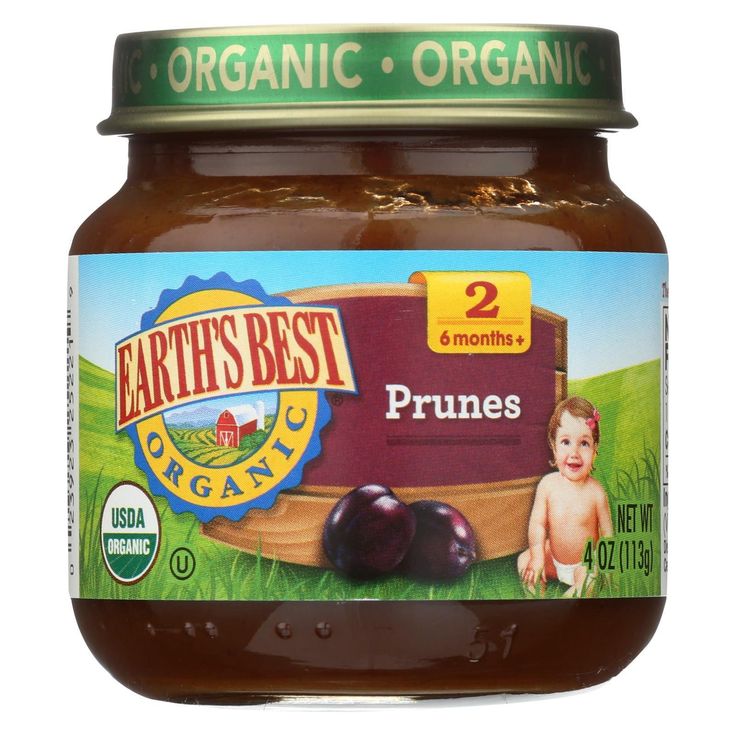 Put apples, prunes, and water into a large pot. Cover with a lid and turn the burner on high.
Put apples, prunes, and water into a large pot. Cover with a lid and turn the burner on high.
Cook Until Soft: Cook for 8 minutes until tender, stirring occasionally.
Add To Blender And Puree: Pour everything into a blender, puree prunes and apples (if using) until smooth. For babies 4-8 months, a totally smooth puree is the ideal texture you’re looking for. Once your baby gets older (9-12 months) you can make a chunkier puree.
Store And/Or Serve! Pour the smooth puree into ice cube trays and allow it to cool. Cover/wrap, and freeze.
Note: Thaw this prune baby puree in the fridge the night before use, or thaw by putting the ice cube in a bowl over a bowl of hot water on the counter to defrost.
❓Recipe FAQs
Are prunes healthy for babies?
Yes! Prunes for babies are super healthy. Prunes are dried plums, so like plums they are high in vitamins and nutrients, and also help baby stay regular (1 cup of whole prunes have 12 grams of fiber).
Some of the other health benefits of prunes include: they are an excellent source of protein, fiber, Vitamin A, Vitamin B6, potassium, vitamin K, and antioxidants. Vitamin B6 helps the body process protein, while potassium helps to balance fluid levels in the body. Vitamin K contributes to healthy blood, and antioxidants help to fight free radicals.
However, prunes are high in natural sugars, so allow baby to enjoy this apple prune puree in moderation.
When can babies eat prunes?
Babies can start eating prunes as soon as they start on solids, typically around 4-6 months of age.
I generally recommend saving this prune baby food recipe after you’ve introduced a few mild veggies first (like carrots, sweet potatoes, green beans, peas) so that your baby gets used to less-sweet solid foods as their first foods.
This will help to ensure your baby doesn’t reject the vegetables because they don’t taste as sweet. Babies already know sweet tastes, since breastmilk and formula are both naturally sweet! Typically, I recommend giving this apple and prune puree to your baby after they’ve tasted about 4-5 veggies first.
Babies already know sweet tastes, since breastmilk and formula are both naturally sweet! Typically, I recommend giving this apple and prune puree to your baby after they’ve tasted about 4-5 veggies first.
Does prune baby food help with constipation?
Yes, prune baby food can help your baby when they are constipated. Prunes help with constipation because they are high in fiber and they also contain sorbitol, which helps get things moving and pulls water into the digestive tract, which eases baby constipation.
When it comes to how much prune puree for baby constipation, I recommend starting with 2-3 tablespoons of this baby food with prunes first, and increase as needed. If you’re wondering “how long does prunes take to work for constipation?” – typically it will take 12-24 hours for the prunes to take effect.
Note: I like using pureed prunes better than prune juice to ease constipation since it works just as well but won’t typically cause diarrhea the way prune juice might!
Do you have to cook prunes for baby?
Yes, you do need to cook prunes before feeding them to your baby. Prunes are thick and sticky, and difficult to chew. By cooking the prunes, you make them softer, and easier to mash in their gums. I recommend cooking and pureeing your prunes with water so that your baby can easily swallow them.
Prunes are thick and sticky, and difficult to chew. By cooking the prunes, you make them softer, and easier to mash in their gums. I recommend cooking and pureeing your prunes with water so that your baby can easily swallow them.
Are prunes a choking hazard for babies? Can toddlers eat dried prunes?
Pureed prunes are not a choking hazard. But dried prunes are a choking hazard for babies under 1 year of age, similar to how raisins or grapes might be – because they’re sticky and hard to chew.
If your baby is over 1 year of age, and you want to give your toddler dried prunes, I recommend soaking the dried prunes in water to rehydrate them, and then mashing or chopping them into small pieces to reduce any risk of choking.
How to serve baby food prunes?
You can serve this puree on on a spoon, on top of pancakes, mixed with other purees, in yogurt, or even oatmeal!
How do you store prune baby food? Can you freeze prunes?
Yes you can freeze prunes! You can also store this organic prunes baby food in the fridge.
To store in the fridge: Transfer the entire puree to an airtight container and place in the fridge. It will keep for up to 5 days. You can just just scoop out a small quantity of these prunes baby food every time you serve it to your budding eater.
To freeze: Let this healthy prunes puree cool, then transfer to an ice cube tray (or trays), that has an airtight or fitted lid. You can also wrap your ice cube tray in plastic wrap and store in the fridge. Pop out the cubes and thaw in the fridge or warm gently in the microwave or on the stovetop before serving (you want it to be just room temperature so it’s not too hot for your baby).
💭 Expert Tips
- Make a large batch – To save on prep time for your baby’s meals on a daily basis, I recommend using baby food freezer containers or ice cube trays to store these healthy prunes for baby. That way you can make one large batch that will last you and your baby for several months!
- For a smooth consistency – Use a good blender, or food processor to easily blend the fruit puree.
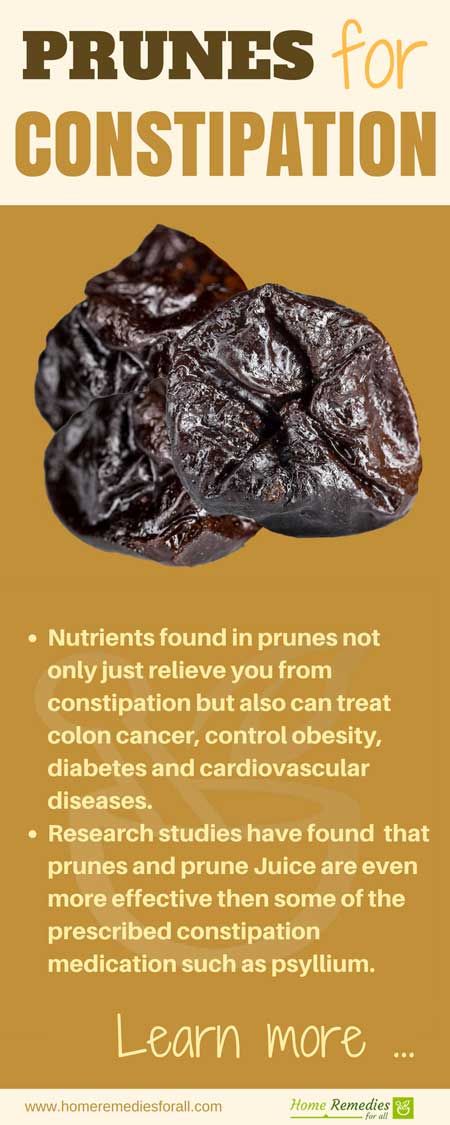
- Use pitted prunes to save yourself time from removing the pits yourself.
- Keep skins on – If you remove the apple skin you will lose some of the fiber and nutrients, so keep the skins on! They will blend easily once cooked down.
- For a store bought recommendation – If you run out of this puree, and have to buy store bought, there are two brands that I recommend: Plum Organics Stage 1 Prunes, and Happy Baby Prune Puree.
🍎 More Homemade Baby Food Recipes!
- 10 Easy Baby Food Recipes for Beginners
- Zucchini and Apple Puree
- Butternut Squash Puree
- Pea Puree
- Superfoods for Babies and Recipe Ideas
LOVE THIS RECIPE? Please leave a 5-star rating 🌟 in the recipe card below and/or a review in the comments section further down the page!
You can also FOLLOW ME on FACEBOOK, TWITTER, INSTAGRAM, and PINTEREST to see more delicious, healthy, family-friendly food, and if you have any questions, I’m here to help!
📋 Recipe Card
https://youtu.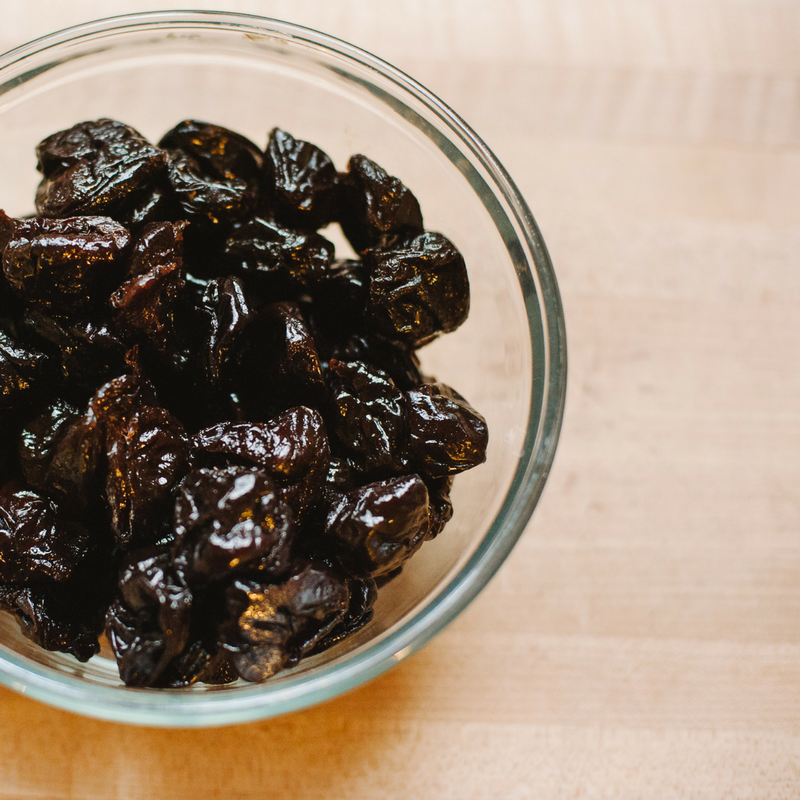 be/9I8jl6IAZC8Video can’t be loaded because JavaScript is disabled: Prune Baby Food Puree with Fuji Apples (https://youtu.be/9I8jl6IAZC8)
be/9I8jl6IAZC8Video can’t be loaded because JavaScript is disabled: Prune Baby Food Puree with Fuji Apples (https://youtu.be/9I8jl6IAZC8)
5 from 12 votes
Prune Puree Baby Food
This simple recipe for prune baby food puree will quickly become one of your baby's favorites. Full of healthy antioxidants and fiber, prune puree helps keep baby regular!
Prep Time15 mins
Cook Time15 mins
Total Time30 mins
Course: Baby Food
Cuisine: American
Diet: Gluten Free, Vegan, Vegetarian
Servings: 16 ounces
Calories: 77kcal
Author: Anjali Shah
- ▢ 8 Organic Fuji Apples
- ▢ 20 Organic Prunes dried plums
- ▢ 8-10 oz water for a thicker puree, use less water
- ▢
Cutting Board
- ▢
Chopping knife
- ▢
Regular Blender
- ▢
Large Stock Pot
- ▢
Covered Ice Cube Trays For Freezing
- ▢
Wash the apples.
 Cut in half and remove seeds and stems. Cut each half into 4-6 pieces.
Cut in half and remove seeds and stems. Cut each half into 4-6 pieces. - ▢
Remove pits from prunes (or – timesaver: get pitted prunes!)
- ▢
Put apples, prunes, and water into a large pot.
- ▢
Cover and turn the burner on high. Cook for 8 minutes, stirring occasionally.
- ▢
Pour everything into a blender, puree until smooth.
- ▢
Pour into ice cube trays and allow to cool. Cover/wrap, and freeze.
Expert Tips
- Use baby food freezer containers or ice cube trays to store this baby food. That way you can make one large batch that will last you and your baby for several months!
- Use a good blender, or food processor to easily blend the fruit puree.
- Use pitted prunes to save yourself time from removing the pits yourself.
- If you remove the apple skin you will lose some of the fiber, so keep the skins on! They will blend easily once cooked down.
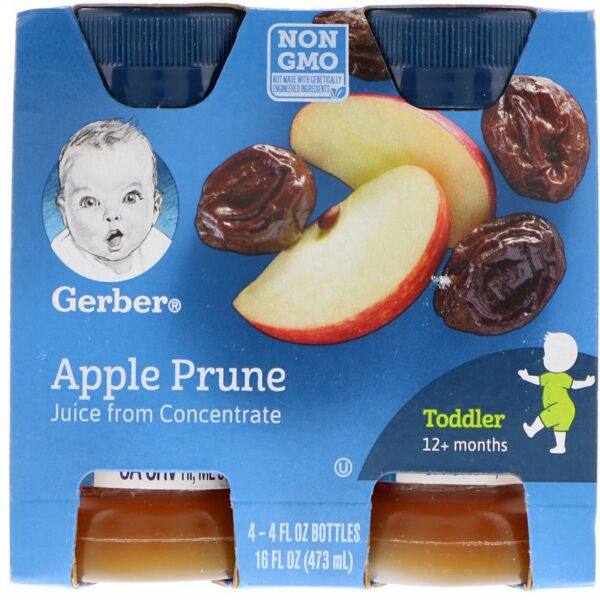
- Thaw in the fridge the night before use, or thaw by putting the ice cube in a bowl over a bowl of hot water on the counter to defrost.
- Spice up your baby’s food! Add a pinch of cinnamon, nutmeg, or allspice to this recipe!
- 1 ice cube = 1 oz of food
Adapted from BabyLove
Calories: 77kcal | Carbohydrates: 21g | Protein: 1g | Fat: 1g | Saturated Fat: 1g | Sodium: 2mg | Potassium: 189mg | Fiber: 3g | Sugar: 14g | Vitamin A: 147IU | Vitamin C: 4mg | Calcium: 11mg | Iron: 1mg
Posted In…
Plant Based Baby Food Recipes ·
These healthy, plant based and vegetarian baby food recipes are easy to make at home and are more budget friendly than store-bought baby food too! The best part is – you can introduce ingredients at your own pace and create unique flavor combinations for your baby.
Your little one will love my DIY healthy baby food purees like this blueberry baby food, our baby food with peas, carrots puree, and our protein packed baby lentil recipe!
For older babies, try our baby led weaning foods, and if you’re just starting out with solids, try our avocado puree as your baby’s first food!
Also posted in Healthy Kids · Plant Based Recipes
Prune puree - Encyclopedia Baby food
7-8 months Gluten-free Milk-free Flour-free Meat-free Sugar-free Egg-free Boil Second breakfast Low calorie Lunch First food Snack Cooked Puree Recipes Dinner Fruits and berries
No comments
Levchuk Victoria © Basically I try to buy baby prunes puree, very rarely I cook it in winter. And in the summer I cook baby plum puree. Mainly because it is difficult for me to choose a quality dried fruit in our city market. However, this time the grandmother thought about the baby and in the summer she prepared dried plums. What made me very happy when she brought a whole three-liter jar of prunes. nine0003
And in the summer I cook baby plum puree. Mainly because it is difficult for me to choose a quality dried fruit in our city market. However, this time the grandmother thought about the baby and in the summer she prepared dried plums. What made me very happy when she brought a whole three-liter jar of prunes. nine0003
The difference between prune puree prepared at home and industrial is obvious. Firstly, prunes should only be introduced in an industrial jar, especially if the baby is over 4 months old. The fact is that a purchased jar of prune puree has a homogeneous delicate consistency, but homemade baby puree, even with prolonged whipping, turns out with small pieces. Therefore, if the child has not yet begun to eat small pieces, then you have to pass the puree through a fine sieve. By the time you make this puree, you won't want anything. nine0013 Secondly, homemade puree has a plum flavor, sweetish with a slight sourness. But the taste from the jar is a little different, more chocolate or something, like a delicacy, almost does not give a plum.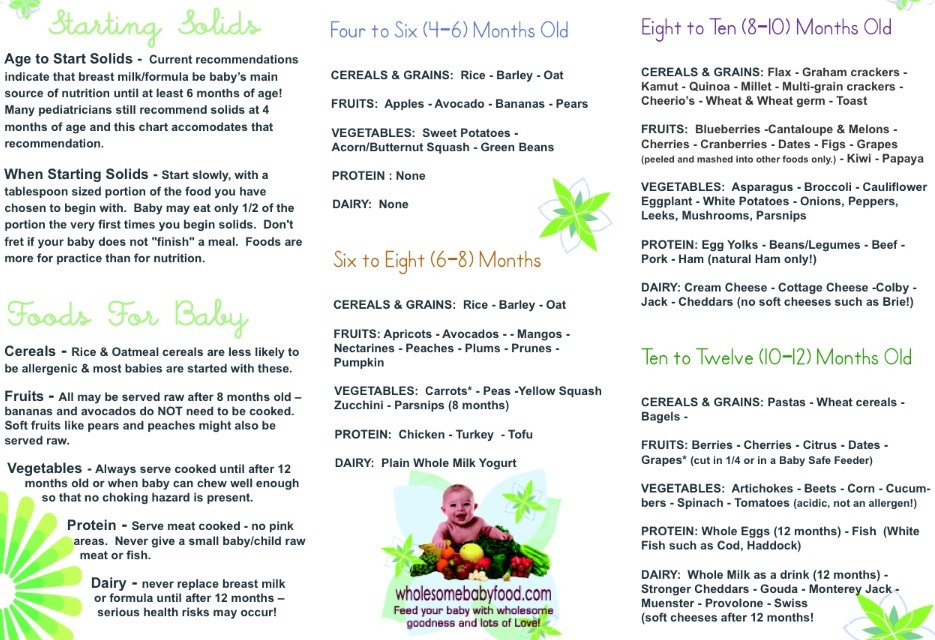
Therefore, if the baby is younger than 9 months, either we are busy with cooking, or we buy a jar of ready-made prune puree.
I repeat that prunes can be given to children at the age of 7-8 months, 50-60 grams up to a year. Prunes are good for intestinal motility during childhood constipation. Therefore, you should not refuse such a wonderful means of regulating the baby's stool. But each baby has its own stool softener, so do not be surprised if prunes do not suit your baby and suddenly fix it. Everything is individual. But in most cases, prune puree weakens the stool. nine0003
puree from prunes
| Print a recipe |
Tasty puree puree from Blueberry of dark brown brown color!
| Portions | Preparation time |
| 4 servings | 20 minutes |
| Cooking time |
Ingredients
- 200246 200 grams of dried grafts
Portions 9000 Let dried prunes absorb water and become soft, the time may take from 20 to 60 minutes, depending on the degree of dryness of the product.
Then we drain the water, fill in a new portion and rinse well. nine0003
Fill twice with water and put on fire to boil.
Cook for about 20 - 30 minutes, until the prunes are tender.
Beat with a blender until smooth with the addition of liquid. Puree without liquid is very thick.
Serve warm to the child.
Can be stored in the refrigerator for up to 3 days, although we give baby puree to a child under one year old only 24 hours from the moment of preparation. Can be stored in the freezer for up to 3 months. nine0003
After boiling prunes, there is a compote left, it can be used to make prunes puree or give the baby as a compote the next day.
Social networks:
 Now let's talk in detail about prunes and its introduction to complementary foods. nine0003
Now let's talk in detail about prunes and its introduction to complementary foods. nine0003
Prunes are nutritious fruits that are great fun as they have a sweet, deep flavor and a sticky, chewy texture. Prunes are actually dried plums, or rather, the dried version of special varieties of plums, such as Hungarian or Burton. For the manufacture of dried fruit, only ripe and sweet fruits are used.
History of prunes
Table of contents:
The process of drying plums to make prunes is believed to have taken place thousands of years ago in the region near the Caspian Sea, the same region where European prunes originated. They spread throughout Europe with the migration of different cultures and civilizations. It is believed that prunes began to be produced in Russia around the 17th century, and in America in the 19th century. nine0003
Why is prunes better than plums?
Prunes are one of the best foods to introduce into your baby's complementary foods.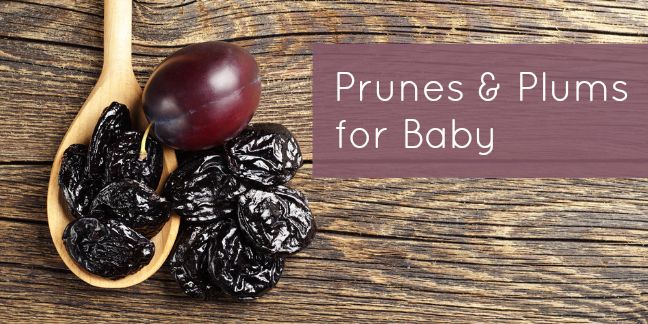 Three medium prunes are a good source of both types of dietary fiber, soluble and insoluble. Prunes contain a lot of fiber, but they are also high in sugar, so you should not consume this product too often. It is better to eat prunes no more than a few times a week.
Three medium prunes are a good source of both types of dietary fiber, soluble and insoluble. Prunes contain a lot of fiber, but they are also high in sugar, so you should not consume this product too often. It is better to eat prunes no more than a few times a week.
Prunes contain significantly more nutrients and minerals than plums. He is the most famous product for maintaining bowel function and relieving constipation. It is important to note that this product is rich in iron, chromium, magnesium, zinc, potassium, manganese, phosphorus, as well as vitamins such as A, B, C, E, etc. nine0003
Moreover, it should be noted that prunes help with constipation better than plums, since they have a more pronounced laxative effect. Sorbitol, a natural sugar present in prunes, functions as a laxative, it draws moisture into the digestive tract and eases bowel movements.
Prunes are an excellent source of vitamin A, which is essential for healthy vision. One prune provides 3% of the recommended daily intake of vitamin A. Prunes contain manganese, iron, and plant phenols, which act as antioxidants and help protect cell membranes from free radical damage. This product contains a lot of potassium, which ensures the proper functioning of the heart. nine0003
Prunes contain manganese, iron, and plant phenols, which act as antioxidants and help protect cell membranes from free radical damage. This product contains a lot of potassium, which ensures the proper functioning of the heart. nine0003
One serving of prunes (100g) meets your daily boron requirements, and the potassium present in prunes helps support healthy bones. Prunes also have anti-inflammatory properties and are highly recommended for people suffering from arthritis. Iron deficiency that occurs in babies after 6 months can lead to anemia, and prunes are excellent sources of iron, which the child's body needs to replenish from food. It is important to note that prunes contain vitamin C, which improves the absorption of iron. nine0003
According to the complementary feeding scheme, prunes are introduced at about 7-8 months, earlier only for medical reasons. For example, if a child has constipation and the pediatrician recommends introducing prune puree so as not to use medications. But it must be borne in mind that prunes are still a fruit, so it cannot be the first complementary food product, too much stress on the baby's digestive system, especially if he has recently turned 4-5 months old.
But it must be borne in mind that prunes are still a fruit, so it cannot be the first complementary food product, too much stress on the baby's digestive system, especially if he has recently turned 4-5 months old.
Therefore, prunes can be introduced into the diet of a child from 4.5 -5.5 months, not earlier, on the recommendation of a doctor, the ideal age is after 6 months, but not as the first product, it is good if prunes puree is the third or fourth product . These are recommendations, but as you understand, everything is individual, so it is necessary to consult a pediatrician before introducing prunes into complementary foods. nine0003
It should also be noted that prune puree is a sweet product, after tasting which the baby may refuse to eat more insipid vegetables and cereals.
If the baby is too small, he has constipation, and he is breastfeeding, then it is better to eat prune puree for mom, from one 100 gram jar, the effect will be amazing for both.
Prunes and plums are placed together in the complementary feeding scheme, there is a nuance here. If complementary foods are introduced in the summer, when plums are in season, then we first introduce plums into complementary foods. They have a less pronounced laxative effect than prunes. After we introduce prune puree into complementary foods. If 7-8 months fell on the winter, then we introduce prunes into complementary foods, as the most affordable product. We introduce carefully for 5-7 days, carefully monitor the child's stool, which can become liquid. And in the summer, at an older age, we introduce the baby to the plum, we look at the child's reaction to the product for 3-4 days. nine0003
If complementary foods are introduced in the summer, when plums are in season, then we first introduce plums into complementary foods. They have a less pronounced laxative effect than prunes. After we introduce prune puree into complementary foods. If 7-8 months fell on the winter, then we introduce prunes into complementary foods, as the most affordable product. We introduce carefully for 5-7 days, carefully monitor the child's stool, which can become liquid. And in the summer, at an older age, we introduce the baby to the plum, we look at the child's reaction to the product for 3-4 days. nine0003
We start giving a new product with 1 teaspoon in the second feeding, gradually increasing the dosage to the prescribed norm, about 70 grams at about 7 months, and 80 grams at 8 months. You should no longer give fruit puree to your child. But it is better to give prune puree up to a year no more than 50-60 grams, because of its laxative properties. We also observe a baby, if such reactions as bloating, diarrhea, abdominal pain appear on the prune puree, then it is worth temporarily canceling the baby puree, and later reintroducing it. But to select a portion of prunes individually, perhaps without reactions, the baby will be 10-15 grams per week or 10 grams 2-3 times a week, all individually. nine0003
But to select a portion of prunes individually, perhaps without reactions, the baby will be 10-15 grams per week or 10 grams 2-3 times a week, all individually. nine0003
It is necessary to give prune puree 1-2 times a week, we look at the state of the child's stool. If it is very liquid, then we do not give prunes. And if the child has constipation, then you can give prunes until the condition improves, but not more than the prescribed norm per week, which is 100-120 grams for up to 1 year.
It is also important to note that each child has his own laxative product, so it is possible that prune puree will not affect the stool in any way, I repeat, perhaps in rare cases.
Before a year, prune puree must be cooked, boiled. After a year, you need to soak the prunes and give fresh prunes puree. Up to 3 years, whole prunes should not be given. Pieces of prunes can be given after 2 years, but they should be boiled and well soaked in water so that they are soft and easy to chew. nine0003
nine0003
However, the age in relation to whole prunes is individual, because if the child does not know how to chew well, constantly chokes on food, then it is better not to give whole prunes, especially if the dried fruit sticks to the teeth. After a year, the norm is 2-3 prunes per day, as a replacement for sweet foods. Give prunes to a child without seeds.
Prunes Allergy
Children are rarely allergic to prunes. However, it is important to note that modern dried fruits are treated with some chemicals, so they can be allergic. Also, a reaction is possible with individual intolerance or with an allergy to cherries, almonds, cherries, apricots, peaches. nine0003
The most common allergic reaction is skin rash or digestive problems. But other symptoms inherent in allergies are also possible, therefore, when introducing prunes into complementary foods, we observe the child very carefully during the day. Quincke's edema with the use of prunes is very rare.
How to choose and store prunes
Prunes are sold in any store all year round.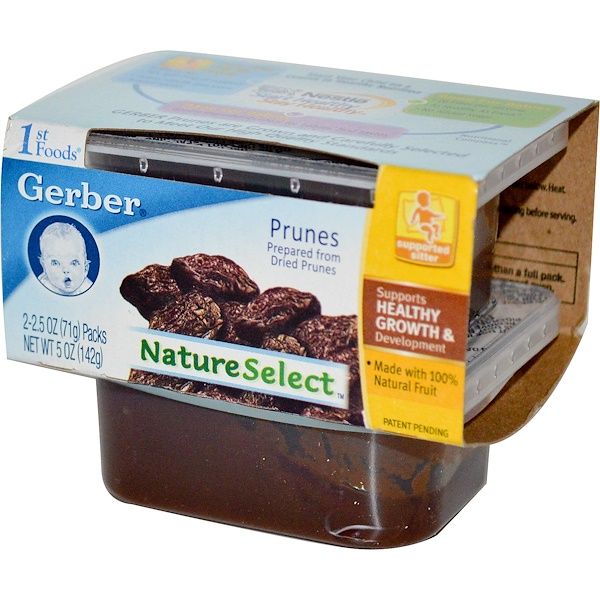 It can be purchased loose or packaged. The form that is chosen should depend on personal preferences and needs. nine0003
It can be purchased loose or packaged. The form that is chosen should depend on personal preferences and needs. nine0003
Ideally, it is best to buy prunes that are sold in transparent containers so that you can judge their quality. Dried fruit should be black, uniform matte in color, plump, without gloss, relatively soft and without mold. The taste is sweet with a slight sourness, without bitterness. Shine and brightness is acquired by the product when it is treated with wax or glycerin. It is best to buy prunes with a stone, it is stored longer. Good prunes turn white in places when wet.
If the packaging is opaque, make sure it is tightly sealed so that the prunes do not lose moisture. As with any dried fruit, try to purchase prunes that are not processed with food preservatives such as sulfites. nine0003
Prunes should be stored in an airtight container in a cool, dry and dark place where they will keep for several months. Storing it in the refrigerator will extend the freshness, allowing the prunes to be stored this way for about six months.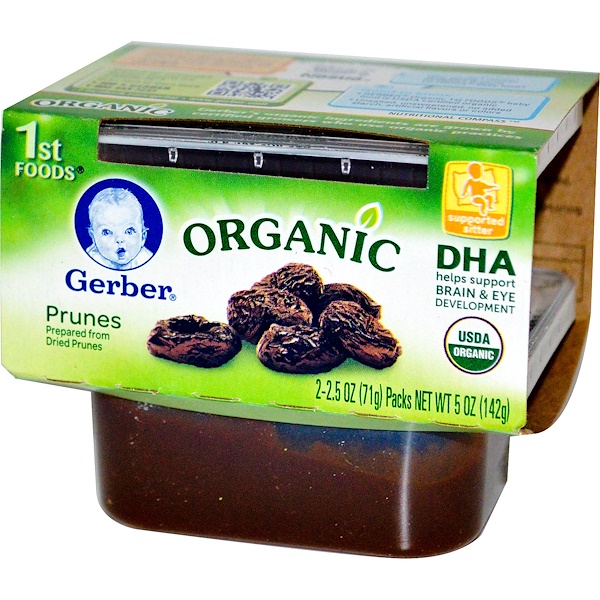 Regardless of where the dried fruit is stored, you need to make sure that when you open the container, it is tightly sealed with sweat to prevent moisture loss.
Regardless of where the dried fruit is stored, you need to make sure that when you open the container, it is tightly sealed with sweat to prevent moisture loss.
Prunes and pesticides
All dried fruits are treated with sulfur dioxide to kill insects. Prunes become so shiny, dark black and oily when treated with glycerin or wax. Prunes acquire a coffee shade if they are treated with caustic soda, such a product can be bitter, contains less nutrients and vitamins. nine0003
Freezing prunes
It makes no sense to freeze dried fruit itself, because if stored properly, it will stand for a year without changing its taste and quality. But you can freeze baby prune puree. Its shelf life is about 3 months. Prune puree freezes well with a large amount of water in baby puree; when defrosting, the structure of the puree can be slightly changed. If there is not enough water, then the prune puree will not freeze completely.
Contraindications
Prunes should not be consumed in case of product intolerance, allergies, obesity, diabetes mellitus, diarrhea, elevated hemoglobin, hypotension, urolithiasis.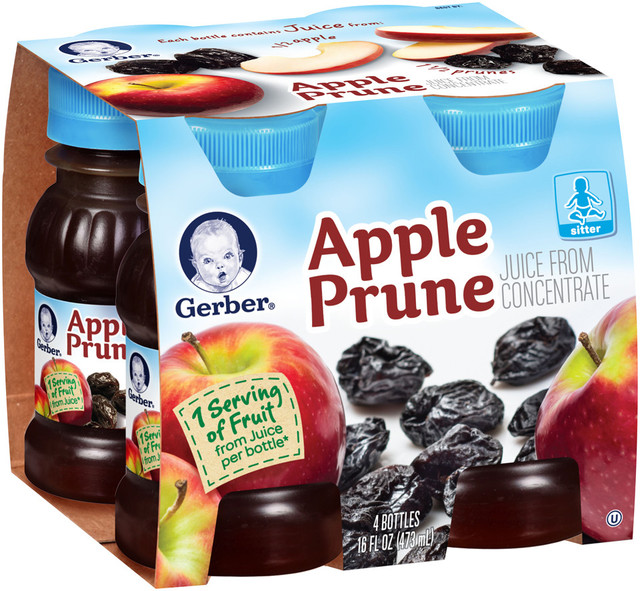
How to cook prunes
Prunes must be boiled before soaking. Then soak in water at room temperature for 15-30 minutes to make the dried fruit plump and soft. It may take less time. Remove pits from prunes, if any. For babies, prunes must be boiled in water for about 5-10 minutes, then beat with a blender until smooth. For children older than 1 year, beat the product in a blender until smooth. nine0003
Proposed method of consuming prunes in baby food
At first, at the beginning of complementary foods, when a child is 7-8 months old and older, he eats prunes as a fruit puree, especially if there are no problems with stool. The older the child gets, the more difficult their complementary foods become. And prunes in a moderate dose are an excellent addition to pilaf, to meat dishes, to cereals, to homemade sugar-free sweets, to pastries, to compotes, jelly, to fermented milk products. Also, do not forget about sauces and side dishes, for example, rice with prunes. nine0003
nine0003
For example, you can cook a turkey with prunes, or braised prunes with lamb, garnished with rosemary.
Drink from prunes
You can make compote, decoction, decoction, jelly and many other good and useful things for a child from prunes. In general, on the Internet it is advised to give compote from prunes almost from 4 months, it seems to me that this is not correct. After all, even this product should not be among the first complementary foods. Therefore, compote can be given to a child after the introduction of prunes into complementary foods, about 7-8 months. nine0003
In principle, if the product is successfully introduced, then compote can be given the very next day, but not much 10-20 grams, to look at the child's stool. If all is well, then alternate prune compote and prune puree for a week. Well, for example, give prune puree one day a week, one day - prune compote. This will be enough so that the child's stool is not upset, but at the same time fruit puree is beneficial.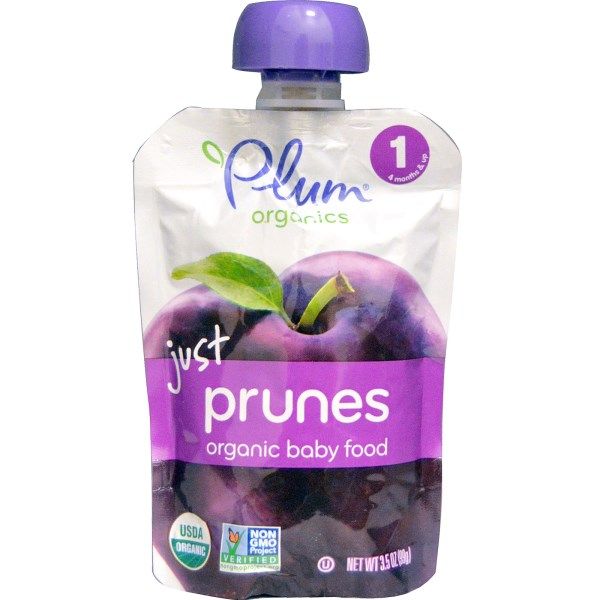 But I repeat, we look after the child's stool and adjust the portion from the state of the child's stool. nine0003
But I repeat, we look after the child's stool and adjust the portion from the state of the child's stool. nine0003
Dried prunes baby food
Almost all baby food manufacturers make prunes puree. The standard composition is prunes and water, less often just prunes. Therefore, we carefully read the composition of the children's product. Among the producers of prune puree you can find such as Babushkino Lukoshko, Rusty Bolshoy, Frutonyanya, Semper , diapers, Gerber , Marmaluzi , 30014 , Bebivita , Fleur Alpina , Theme, Clever, Bellakt, Sami with a mustache, Khaleda, Spoon in the palm of your hand , etc. The combination of apple and prunes can be offered to us by brands such as Babushkino Lukoshko, Spoon in the palm, Gerber , Fleur Alpina .